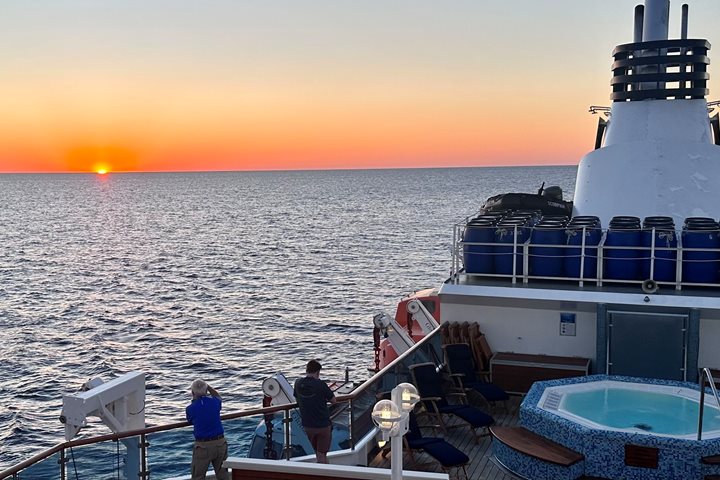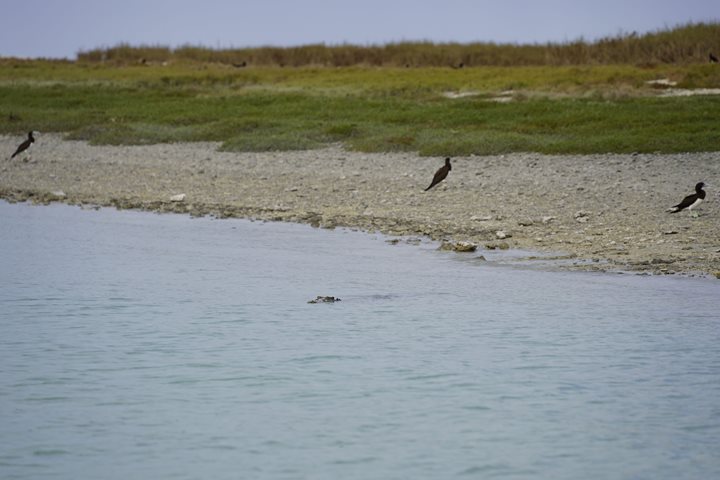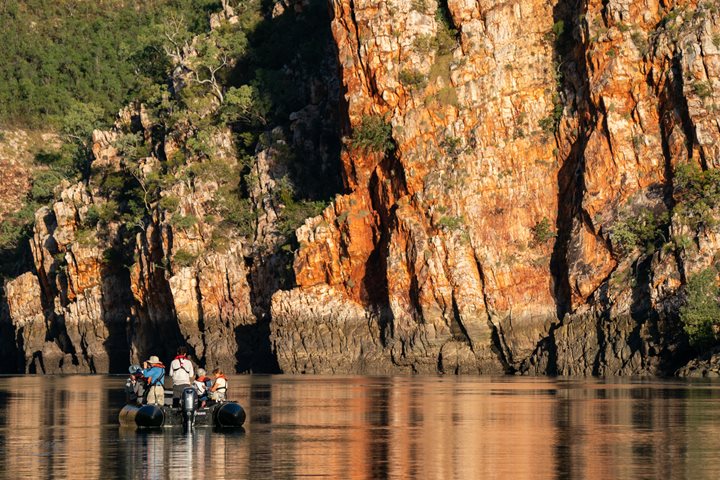We arrived before daybreak as we anchored off Jar Island. As the sun rose, we could see how picturesque this tiny island was, nestled within the enormity of Vansittart Bay. We enjoyed an early breakfast as we contemplated our upcoming adventures. We would have the opportunity to see a unique style of rock art endemic to the Kimberley called Bradshaw or Gwion Gwion. Bradshaw Rock Art was named after the exploring pastoralist Joseph Bradshaw who first recorded these enigmatic human figures near the Roe River in 1891. Gwion Gwion Rock Art was named after a bird, the sandstone shrike thrush. According to aboriginal mythology, the Gwion Gwion bird pecked the rocks causing its beak to bleed. This bloodstained beak was used to draw the highly decorative and delicate rock art.
The golden beach where our Zodiacs landed was framed by large sandstone outcrops topped with sandstone blocks that looked as though they were strewn there by a giant. Within the sandstone were weathered nodules of iron, known as ochre, which are used as the pigment for rock art.
In the afternoon, we repositioned closer to the Anjo Peninsula to explore a piece of World War II history. Commencing in December 1941, the Japanese advanced southwards and gradually captured parts of the Dutch East Indies. By late February 1942 they were threatening the important island of Java. The Allies (Dutch, British, Americans and Australians) made attempts to defend Java before it became inevitable that Java would have to be evacuated.
The most convenient airfield was at Broome in Western Australia. At this time Broome was under American military control. The aircraft used in this mass evacuation were C-53 Skytroopers, a military variant of the well-known Douglas DC-3. On February 26, 1942, during a return flight from Perth to Broome, the pilot made a navigational error and crash landed on a salt pan on the Anjo Peninsula. No one died and all six of the crew were rescued by QANTAS Empire Flying Boats on March 1, 1942.
Once we left the beach, we made our way over to the salt pan. To our amazement the salt pan was inundated by the morning high tide and full of water. We then negotiated a longer walk skirting the perimeter and got the opportunity to see some of the secretive critters that emerged from the saturation of the salt pan. One of these was a distinctive fiddler crab, a male with an obviously enlarged claw designed to deter competing males as well as to flag nearby females. Because of such a large claw, the males need to eat twice as much as females.









